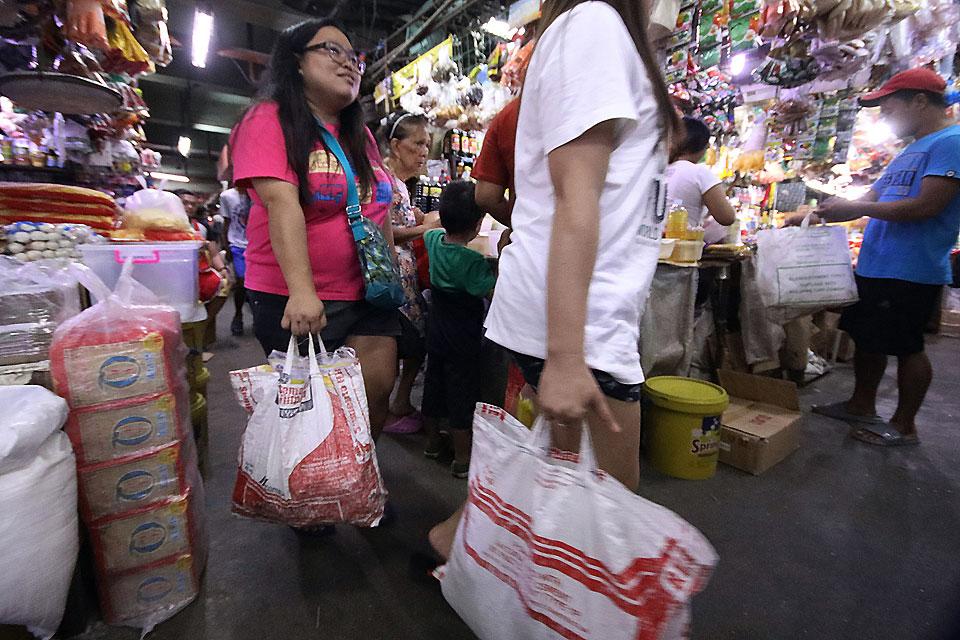Inflation accelerates to 3.3% in November

Inflation or the rate of increase in the prices of goods and services recorded its second straight month of increase, accelerating to its highest in more than a year due to the faster increase in the prices of food items amid supply disruption brought by strong typhoons during the period.
It clocked in at 3.3% last month from 2.5% in October. This is faster than the 1.3% inflation rate recorded in November 2019.
November’s inflation rate is also the highest since April 2019, when it settled at 3%.
Last month’s figure is also faster than the Bangko Sentral ng Pilipinas’ forecast range of 2.4% to 3.2%.
“Ang pangunahing dahilan ng pag-angat ng inflation sa buwan ng Nobyembre 2020 ay ang mas mabilis na pagtaas ng presyo ng Food and Non-Alcoholic Beverages,” National Statistician Claire Dennis Mapa said in a virtual press conference on Friday.
The heavily-weighted Food and Non-Alcoholic Beverages saw an annual increase of 4.3% last month, which primarily pushed up the overall inflation in November.
“Ang datos natin nagpakita nga na ang sources ng pagtaas sa inflation ay nasa food basket natin so ito ay vegetables, meat, and fish. These are really influenced by supply and you have typhoons in November so it affected the prices,” Mapa said.
In November, Super Typhoon Rolly and Typhoon Ulysses ravaged most of Luzon and parts of Visayas and brought massive damage to the agriculture sector as well as to infrastructure.
The lingering threat of African swine fever also affected supply of meat and contributed to the increase in prices.
“Sa karne, partikular na ‘yung baboy, nagkaroon tayo kasi ng ASF that also affected the supply,” the Philippine Statistics Authority (PSA) chief said.
The November inflation brought the year-to-date figure to 2.6%. This is still within the government’s target of 2% to 4% for 2020.
In particular, inflation for food index at the national level picked up further to 4.5% in November 2020, from 2.1% in the previous month. This compares with its annual rate in November 2019 at -0.2%
The index for vegetables exhibited a double-digit annual increment of 14.6% during the month, after registering an annual drop of -0.5% in the previous month.
Annual hikes were recorded in the the following food groups:
- Meat, 8.2%
- Fish, 5.3%
- Fruits, 5.6%
- Sugar, jam, honey, chocolate and confectionery, 0.4%
Contributing also to the uptrend in the overall inflation during the month was the higher annual increment noted in alcoholic beverages and tobacco at 12.3%.
Meanwhile, the PSA reported slower annual gains in the indices of the following food groups:
- Other cereals, flour, cereal preparation, bread, pasta and other bakery products, 2.1%
- Milk, cheese and egg, 1.8%
- Food products, not elsewhere classified, 4.5%
Likewise, the index for recreation and culture was still on a downtrend as its annual rate remained at -0.6% in November.
The index for rice exhibited an annual decrease of -0.1%, while those for corn; and oils and fats retained their previous month’s annual rates.
Inflation for bottom 30%
Inflation felt by the bottom 30% income households in the country accelerated further to 3.6% in November from 2.9% in October.
This is the highest inflation recorded for the bottom 30% income households since March 2019.
Largely contributing to the uptrend in the inflation for the group was the higher annual increase in the index of the heavily-weighted food and non-alcoholic beverages at 2.8%. In addition, the index for housing, water, electricity, gas, and other fuels also registered a higher annual rate of 1.9% during the month.
Inflation in Metro Manila, and outside NCR
Inflation in the National Capital Region (NCR), likewise, increased 3.5% in November from 2.5% in the previous month.
It is also higher compared to November 2019’s 1.5% rate for the capital region.
“Uptrend in the November 2020 inflation in NCR was mainly driven by the 6.2% annual growth rate in food and non-alcoholic beverages. Higher annual increases in the indices of alcoholic beverages and tobacco at 8.5%, and communication at 0.3%, also contributed to the higher inflation in the region during the month,” according to the PSA.
Similar to the trend at the national level and in NCR, inflation in areas outside Metro Manila accelerated to 3.3% in November from 2.5% in October.
“Higher inflation in AONCR was mainly brought about by the 3.8% yearly growth recorded in the index for food and non-alcoholic beverages during the month. Annual increases were also higher in the indices of alcoholic beverages and tobacco at 13.0%; and housing, water, electricity, gas, and other fuels at 1.2%,” the PSA said.
Region V or Bicol Region has the highest inflation rate among all regions at 5.5% since the area was heavily devastated by Super Typhoon Rolly and Typhoon Ulysses.
“Relative to their annual growth rates in October 2020, inflation rates during the month for AONCR were higher in all regions in Luzon, Region VI (Western Visayas), and Bangsamoro Autonomous Region in Muslim Mindanao (BARMM),” the PSA said.
The lowest inflation was still observed in Region VII or Central Visayas at 1.1%. —KBK, GMA News




